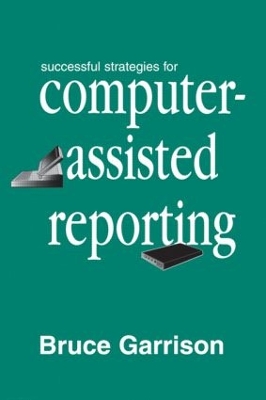Routledge Communication
5 total works
Computers have changed the landscape of both gathering and disseminating information throughout the world. As journalists quickly move toward the 21st century and perhaps, a new era of electronic journalism, resources are needed to understand the newest and most successful computer-based news reporting strategies. Written to serve that purpose, this book is designed to show both professional journalists and students which of the newest personal computing tools are being used by the nation's leading news organizations and top individual journalists. It further describes how these resources are being used on a daily basis and for special projects.
In recent years, computers have taken on new and dominating roles in the process of news analysis, newsgathering, and news processing. Today's forward-thinking journalists often seek guidance over what they can do to strengthen their ability to be society's information processors and managers. This volume focuses upon how successful journalists are using computers through a major national computer-assisted reporting (CAR) study of daily newspapers. The study included two national surveys and a series of personal interviews with many of the nation's leading CAR specialists. Several current examples of stories used for successful database- and online-oriented news assignments are provided as part of a series of case studies incorporated throughout the book. The additional depth of description and the presentation of portions of stories themselves should help readers to understand the complete process involving CAR-oriented journalism.
Substantial analytical detail is used to discuss the extent of computer use in newsrooms, computer training, CAR projects, CAR in daily reporting, hardware and software most commonly used, levels and types of online services used in news research, and portable hardware and software. The book concludes with the author's assessment of the effects and impact of personal computing in the newsroom and the future of personal computer applications in newsgathering. Explaining and defining advanced applications or terminology for readers, the approach to the book assumes a minimal familiarity with computers, but no advanced knowledge of computer operation.
This edition emphasizes three primary aspects of feature writing:
*introduction and writing skills--the basics,
*article types, and
*the collegiate and professional writing life.
Readers learn from the narrative, from the advice of professionals, and by example. Each chapter contains excerpts and complete articles from some of the nation's leading publications to illustrate points made in the text.
Produced to fill a gap in current knowledge about the state of journalism in Latin America, this timely book chronicles how recent changes toward democratization and privatization in the region have influenced mass media industries and the practice of journalism. Written as a tribute to earlier books about the development and status of Latin American news organizations, this text provides a readable overview of journalism in the area. Unlike those in previous works, these chapters are divided by issues and subject matter instead of by nations and regions. Each chapter concludes with a "spotlight" case study to illustrate the reading material. These features -- along with several easy-to- follow tables, topical examples suitable for class discussions, and a variety of sources including original interviews with media professionals -- all combine to form the most up-to-date book currently available on this constantly changing subject.
The final chapter focuses on computer-based reporting -- a must for any professional journalist -- and the appendix lists investigative reporting resources contributed by Orlando Sentinel reporter Jim Leusner.



